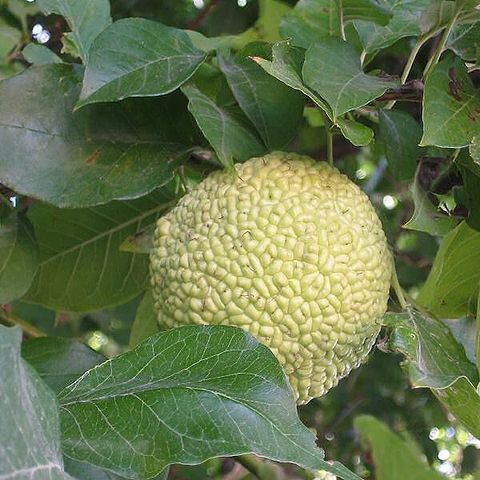Climbers, trees or shrubs, dioecious, armed with straight to curved, reduced branchlets ending in a spinose tip (sometimes only in juvenile specimens). Leaves distichous or spirally arranged; lamina pinnately veined; stipules free or fused, lateral to semi-amplexicaul, often very small. Inflorescences usually solitary, in the leaf axils or on short-shoots, often yellow (dye-containing) glands embedded in the bracts and/or the (fruiting) perianths. Staminate inflorescences globose-(sub)capitate, spicate, or (sub)racemose; perianth with 4, free or basally connate, tepals, decussate, imbricate in the bud; stamens straight or inflexed in the bud. Pistillate inflorescences globose-capitate; flowers free or connate; tepals free or connate, decussate, imbricate in the bud; ovary free or the lower part adnate to the perianth, stigmas 2, mostly strongly unequal in length, or 1. Fruiting perianth enlarged, more or less fleshy; fruit free or adnate to the perianth, when free slightly drupaceous, endocarp crustaceous; seed small to rather large, endosperm present (but scarce) or absent, embryo various, mostly with (rather) thin, folded or flat, cotyledons and a long radicle.
Trees or shrubs, dioecious, with lateral branchlets transformed into spines or with a spinous tip. Stipules lateral, free; leaves alternate and distichous, blade entire (or when juvenile pinnately incised), venation pinnate. Inflorescences in the leaf axils, bracteate, bracts and/or perianths (at least in fruit) with yellow (dye containing) 'glands' embedded in the tissue. Staminate inflorescences spicate; tepals 4, almost free; stamens 4, inflexed in the bud and bending outwards suddenly and elastically; pistillode present. Pistillate inflorescences globose-capitate; tepals 4, almost free; ovary free, stigmas 2 and unequally long, or 1. Fruiting perianth enlarged, fleshy, green; fruits free, slightly drupaceous, endocarp crustaceous; seed small, with endosperm, cotyledons equal and flat, radicle long.
Trees , deciduous; sap milky. Branches with axillary spines. Terminal buds surrounded by bud scales. Leaves alternate; stipules caducous, free. Leaf blade ovate to lanceolate, not leathery, margins entire, never lobed; venation pinnate. Inflorescences: flowers borne outside receptacle; staminate inflorescences loose short racemes; pistillate inflorescences dense heads. Flowers: staminate and pistillate on different plants. Staminate flowers: calyx 4-lobed; stamens 4, inflexed; filaments filiform; anthers introrse, with short connective. Pistillate flowers: sepals 4, 2 outer sepals wider than inner ones; ovary 1, superior, 1-locular; style unbranched, filiform. Syncarps globose, 8-12 cm or more diam.; each achene completely enclosed by its enlarged, fleshy calyx.
Dioecious scrambling shrubs or small trees with axillary spines. Leaves alternate, often distichous, simple, petiolate, without glands; stipules lateral, small. Inflorescence unisexual, pedunculate. Male inflorescence paniculate or capitate. Male flowers: tepals 4, rarely 5, free; stamens 4, rarely 5; filaments erect or reflexed in bud; pistillode small to ?absent. Female inflorescence capitate. Female flowers free or connate in lower half; tepals 4, free or joined in lower half, fleshy at maturity; ovary free or embedded in sockets in fleshy receptacle; style simple or bifid. Fruit an achene (?drupe), thinly pulpy, enclosed in fleshy perianth, often concrescent below into a fleshy syncarp; embryo curved; cotyledons equal.
Shrubs, treelets or climbers, dioecious, armed with spines. Leaves in spirals or sometimes subdistichous, pinnately veined; stipules lateral, free or connate spine-forming branchlets. Inflorescences in the axils of the leaves, globose-capitate, bracteate, with embedded yellow dye-containing glands in tepals and bracts. Tepals 4, partly connate. Stamens 4, inflexed in bud; pistillode present in staminate flower. Ovary free; stigmas 1 or 2 (but then unequal in length), filiform. Fruiting perianth enlarged, fleshy, yellow to orange; fruit free, somewhat drupaceous. Seed rather small; cotyledons thin, equal, plicate.
Dioecious, usually spinous trees, shrubs or climbers. Lvs alternate, entire or toothed; venation pinnate. Stipules caducous, leaving little or no scar. Infls axillary; ♂ infl. paniculate, spicate or capitate; ♀ infl. capitate or shortly spicate; ♀ fls sessile. Calyx of ♂ fls 4-partite and segments free; stamens 4, inflexed or straight in bud. Calyx of ♀ fls deeply 4-lobed or 4-partite and segments free; ovules pendulous; fruiting calyx enlarged, fleshy, closely united into a large globose syncarp. Achenes hidden within calyx; endosperm 0.
Inflorescences in the leaf axils, globose-capitate, bracteate, with yellow dye-containing glands embedded in tepals and bracts; tepals 4, partly connate; stamens 4, inflexed in bud; pistillode present in staminate flower; ovary free; stigmas 1 (or 2 but then unequal in length), filiform, fruiting perianth enlarged, fleshy, yellow to orange-coloured; fruit free, somewhat drupaceous; seed rather small, without endosperm, cotyledons thin, equal, plicate.
Dioecious; staminate fls numerous in loose, globose to oblong, peduncled axillary heads, with 4-parted cal and 4 stamens; pistillate fls coherent in dense, globose, axillary heads, the 4-lobed cal closely surrounding the ovary, the style filiform and elongate; fr a hard, globose syncarp, composed of the enlarged common receptacle and calyces, completely concealing the achenes; trees, usually thorny, with alternate, entire lvs. 11, mainly warm reg.
Leaves spirally (to subdistichously) arranged, pinnately veined; stipules lateral, free or connate on spine-forming branchlets.
Shrubs, small trees or climbers, dioecious, armed with spines.

